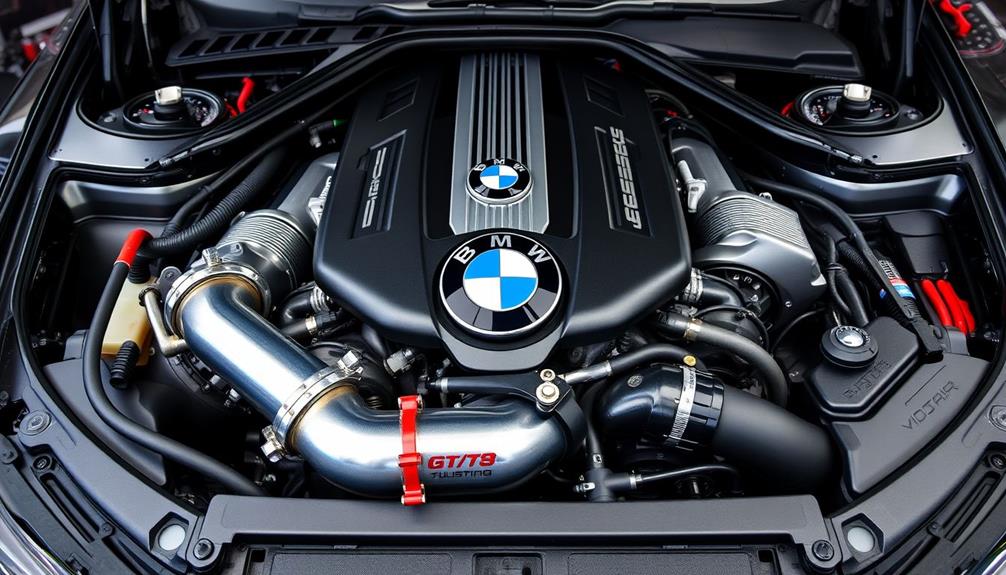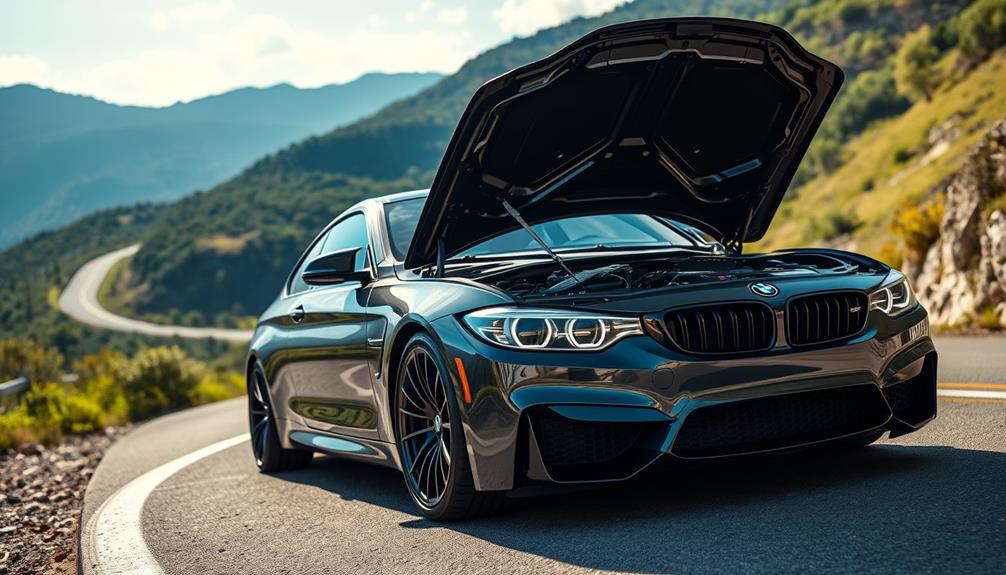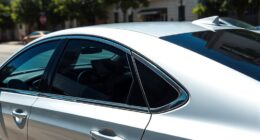If you’re looking for the best BMWs to tune, consider the 340i and M2. The 340i, with its B58 engine, can hit over 500 hp with modifications, while the M2’s N55 engine allows for gains of 40-60 hp. The E90 335i is also a great option, known for its strong aftermarket support and performance upgrades. Plus, the M235i delivers a compact design and significant tuning potential. Each model offers unique advantages to cater to your tuning aspirations. Stick around to discover more about specific upgrades and community insights to enhance your tuning journey. When considering the best BMW engine for tuning, the S55 found in the M3 and M4 models is highly regarded for its potential to achieve high horsepower gains. With the right modifications, this engine can produce over 600 hp. Additionally, the B58 found in the M240i and 440i is also a top contender, known for its robust performance and tuning capabilities. Whether you’re looking for a sedan, coupe, or compact model, BMW offers a variety of options for enthusiasts to explore and customize to their preferences.
Key Takeaways
- The BMW 340i, with its B58 engine, can exceed 500 hp with tuning, making it a top choice for performance enthusiasts.
- The BMW M2, featuring the N55 engine, offers a well-balanced chassis and significant power gains through modifications, ideal for driving enjoyment.
- The E90 335i, powered by the reliable N54 engine, provides strong aftermarket support and excellent performance upgrade potential for tuners.
- The BMW M235i has a compact design and impressive tuning potential, reaching around 400 hp, appealing to turbocharged performance seekers.
- Each model offers distinct advantages in tuning, ensuring enthusiasts can find options that enhance driving dynamics and cater to their aspirations.
Top BMW Models for Tuning
When it comes to tuning, several BMW models stand out for their performance potential and aftermarket support.
The BMW 340i, with its B58 engine, is a powerhouse that can easily exceed 500 hp through an ECU tune and exhaust upgrades. This model not only delivers impressive tuning gains but also offers exceptional handling, making it a favorite among enthusiasts.
Another excellent choice is the BMW M2, equipped with the N55 engine. It starts at 365 hp and can gain an additional 40-60 hp with tuning modifications. The M2's well-balanced chassis complements its power, ensuring you enjoy every twist and turn.
Don't overlook the E90 335i, which features the beloved N54 engine. This model is a tuner's dream, producing 300 hp and boasting vast aftermarket support. With the right upgrades, you can greatly enhance its performance.
Lastly, the BMW M235i is another strong contender, producing 320 hp from its N55 engine. With tuning, it can reach around 400 hp, making it a popular choice for those seeking turbocharged engine thrills.
Each of these BMW models offers unique benefits, ensuring you'll find the perfect fit for your tuning aspirations.
Key Engine Specifications

Understanding key engine specifications is essential for anyone looking to tune a BMW effectively. The BMW B58 engine, featured in models like the 340i, showcases impressive tuning potential, offering between 322-382 hp and the ability to exceed 500 hp with proper modifications. Its robust closed-deck design enhances reliability, making it a favorite among tuners.
The BMW N54 engine is another strong contender. Known for its reliability, it produces 302-335 hp and can handle increased boost pressures, which is why it's popular in the 335i and 535i models. You can expect notable performance gains with aftermarket tuning options.
The N55 engine, found in the M2, delivers 365 hp and 343 lb-ft of torque, with tuning potential allowing for a 40-60 hp increase through ECU remaps.
Additionally, the N57 engine in the 535d offers 309 hp and 465 lb-ft of torque, along with various aftermarket tuning options for enhanced performance.
Popular Aftermarket Modifications

After grasping the key engine specifications, it's time to explore the popular aftermarket modifications that can access your BMW's full potential.
These tweaks not only enhance performance but also align with the desires of car enthusiasts looking for that extra edge.
Here are some popular modifications to evaluate:
- ECU Flash Tune: For models like the BMW 340i (F30), this can offer a boost of 50-80 hp and 30-60 lb-ft of torque.
- Exhaust Upgrades: Installing a downpipe and removing the catalytic converter (where legal) greatly improves exhaust flow, especially in the BMW M2 (F87) and 535d (F10).
- Turbocharger Upgrades: Replacing the factory turbo on the BMW 535d (F10) can lead to considerable horsepower increases.
- Intake Systems: Aftermarket cold air intakes in models like the E90 335i enhance airflow, especially when paired with an ECU remap.
- Suspension Enhancements: Upgrades like Bilstein Damptronic systems can notably improve handling and ride quality, particularly in the BMW M2.
These aftermarket modifications help release your BMW's true performance potential and elevate your driving experience.
Tuning Community Insights

Within the thriving BMW tuning community, enthusiasts share a wealth of knowledge and experience that can greatly enhance your tuning journey. Engaging with forums and online groups can help you uncover valuable insights about performance upgrades specific to various BMW models.
You'll find extensive resources, such as guides and tutorials, that simplify the learning process for newcomers looking to make informed modifications.
Participating in tuning events and meetups not only fosters camaraderie but also allows you to connect with like-minded individuals who share your passion.
Many members emphasize the importance of professional tuning to guarantee reliability and peak performance from your BMW engines. They often recommend specialized tuning shops and technicians who can provide expert guidance tailored to your vehicle's needs.
Cost Considerations for Tuning

Tuning a BMW often comes with a range of costs that can catch you off guard if you're not prepared.
Understanding the cost considerations for tuning is essential to guarantee you make informed decisions.
Here's a breakdown of what to expect:
- Entry-Level Models: Tuning something like the E36 328i averages around $3,341, making it budget-friendly.
- Performance Upgrades: ECU remaps for models like the BMW 340i can set you back between $500 to $1,500, but can boost horsepower by 50-80 hp.
- Aftermarket Parts: For popular models like the M2, expect to pay $1,000 to $5,000 for enhancements like suspension and exhaust systems.
- DIY Modifications: If you're handy, many enthusiasts have successfully completed upgrades for under $1,000, utilizing community resources.
- Resale Value: Tuning can positively impact the resale value of tuned BMWs, especially in enthusiast markets, potentially offsetting initial investments.
Frequently Asked Questions
Which BMW Is Best for Modding?
If you're looking for a BMW to mod, consider the 340i or E90 335i. Both offer excellent performance gains through upgrades, and their strong aftermarket support makes enhancing their power and handling easier than ever.
What Is the Fastest Tuned Bmw?
The fastest tuned BMW is the M5 (F90). With proper ECU tuning and performance modifications, you can push it over 700 hp, making it one of the quickest sedans you'll ever drive.
Which BMW Will Increase in Value?
If you're looking for a BMW that'll increase in value, consider the E30 325i or E46 M3. Their classic status and strong enthusiast demand make them potential appreciating assets in the automotive market.
Are BMWS Good to Tune?
Did you know that tuning a BMW can boost horsepower by 40-80 hp? Yes, BMWs are great to tune, especially turbocharged models, offering robust aftermarket support and reliable performance enhancements that elevate your driving experience.
Conclusion
In the world of BMW tuning, you've got a treasure trove of options. From the powerful M series to the versatile 3 Series, each model offers unique potential for performance upgrades. As you immerse yourself in the tuning community, remember that with the right modifications, your BMW can transform from a sleek ride to a roaring beast on the road. So, gear up and release the full power of your machine—it's time to make your BMW truly your own!










